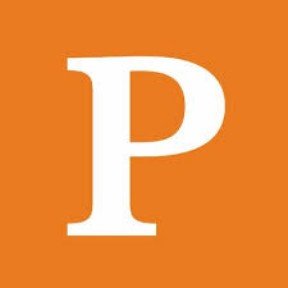Digital Humanities
I always saw the worlds of STEM and the humanities as two separate fields of interest; you either have a passion for math and science or a different passion for language and art. But to my own surprise, there is an intersecting field known as the digital humanities. I wanted to know more about this field and how it could help drive the humanities into the digital age.
I began through research online, wanting to know more of the basics of digital humanities. A source online described it as “…a field of study, research, teaching, and invention concerned with the intersection of computing and the disciplines of the humanities.” I knew technology played a part in preserving the humanities, such as digitally enhancing and protecting copies or precious texts. But it seems digital humanities goes beyond that.
Joshua Salyers, Assistant Professor of Practice in the University Libraries, studies and teaches digital humanities at the University of the Pacific. He was gracious enough to inform me about his work in the digital humanities. He described his work as continuously “…. employing and teaching ways to use technology to improve our understanding of history and then presenting it to the public in new, and hopefully engaging ways.” His recent work involved digitally reconstructing historical places and presenting them through virtual reality or gaming environments. He does this through an empathic gaze, keeping in mind the community and history surrounding these places. One project involved a joint team of history and computer science faculty that led students to create a virtual-reality museum exhibit that reconstructed Little Manila, a Filipino neighborhood in Stockton which was demolished and replaced by the crosstown freeway.
I also inquired about what it was like teaching humanities in a digital age, which aims to make writing with pen and paper almost obsolete. Professor Salyers talked about the difference between students being digital natives versus them having digital literacy. Despite the fact that many of us have grown up with social media and the Internet, very few of us have a working knowledge on how it works. He also talks about how the Internet overwhelms critical thinking skills, which is required when doing research. This is the hardest thing for students to grasp since we often want a shortcut to accomplishing tasks. As a professor, it is his favorite part of teaching digital humanities; students feel otherwise as “…. they have to practice making choices about how to assess and use information within a source instead of following a checklist and being able to say if it's credible or not.” In some ways, this reminded me of literary analysis; perhaps digital humanities are closer to the humanities I know and love than I previously thought.
Professor Salyers then describes the challenges of digital humanities, which often involves a learning curve when dealing with new technology. Although it is often necessary, the time spent on learning this new technology can be overshadowed by what seems to be the essence of digital humanities. Another common challenge involves choosing an approach that will be best suited for each case or study.
With the rising popularity of digital humanities, programs are also becoming available in a good percent of institutions in the United States. An interesting factor to consider is that universities with graduate programs are more likely to offer the digital humanities rather than four year institutions and community colleges. The question then needs to be asked about the accessibility of this field for students who choose to not enter into a Master’s program.
Digital humanities, although daunting at first, seems to be more akin to the essence of the humanities that I know and love. I agree with Professor Salyers in that the digital humanities should undergo the same academic scrutiny as traditional pen and paper sources. The key to mastering teaching digital humanities is finding the balance of technology in the classroom. I imagine this field is the perfect blend for someone who has a technical mind and a passion for the humanities. Once students familiarize with the technology used in the digital humanities, the field will be easier to be widely adopted. After doing my own research and talking to Professor Salyers, I recognize the importance and even beauty of this field. Although it piques my interest, I still feel called to stand by the humanities that involve the traditional means of pen and paper. I also feel as though the use of technology, although promising, might draw me away from my interest and passion towards the Humanities. Despite my own feelings towards the digital humanities, I hope it continues to progress and drive the humanities further into the digital age.


